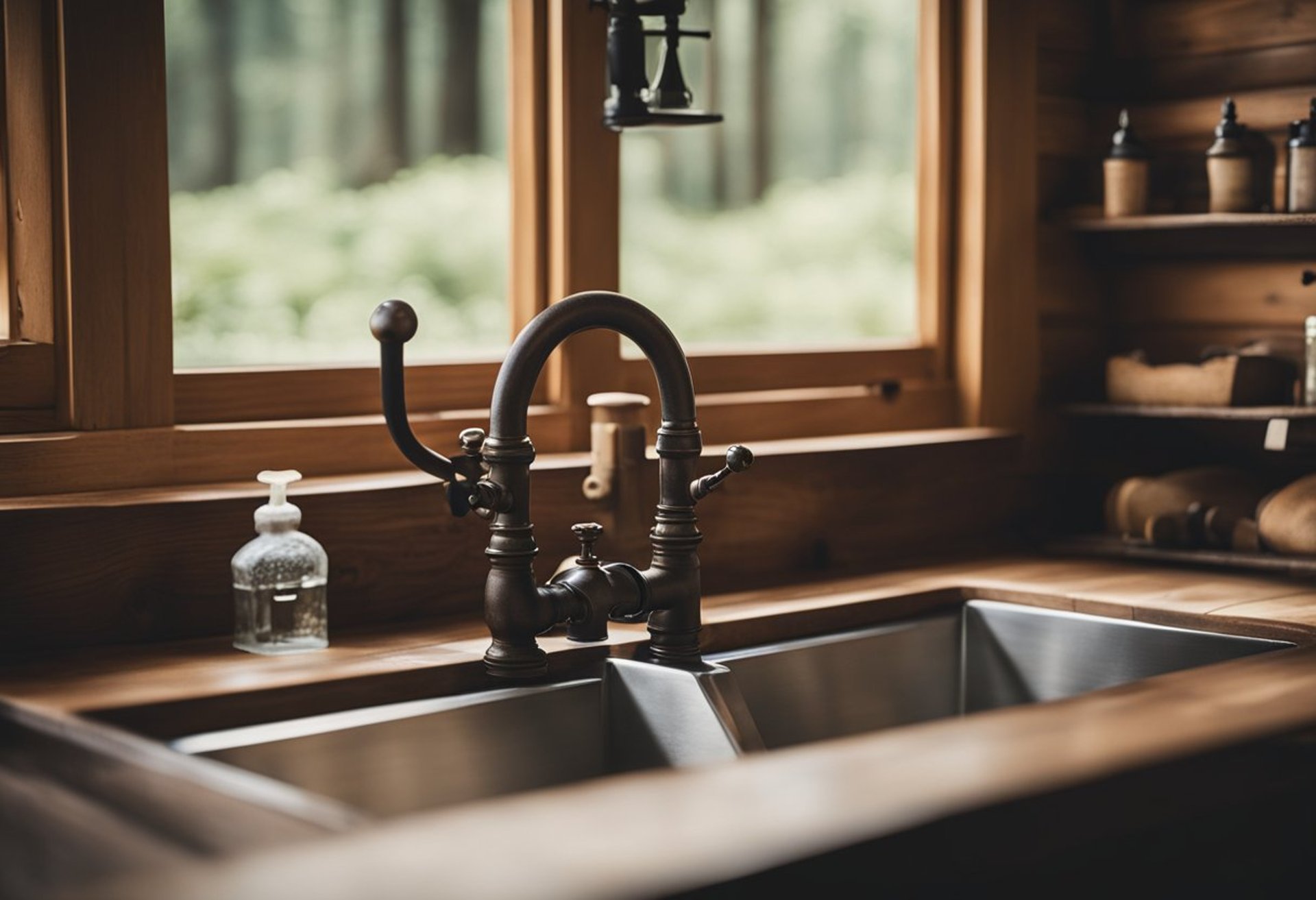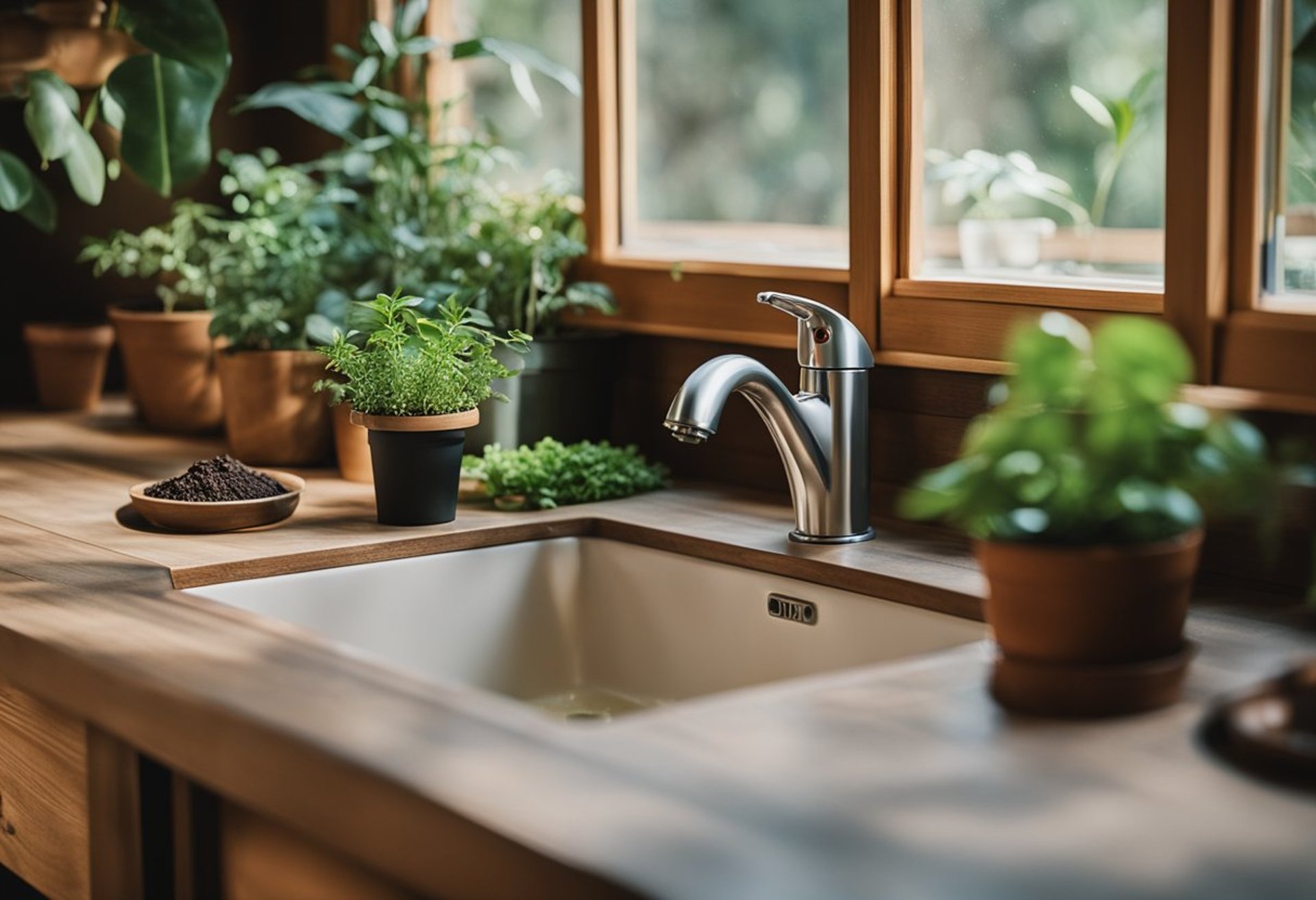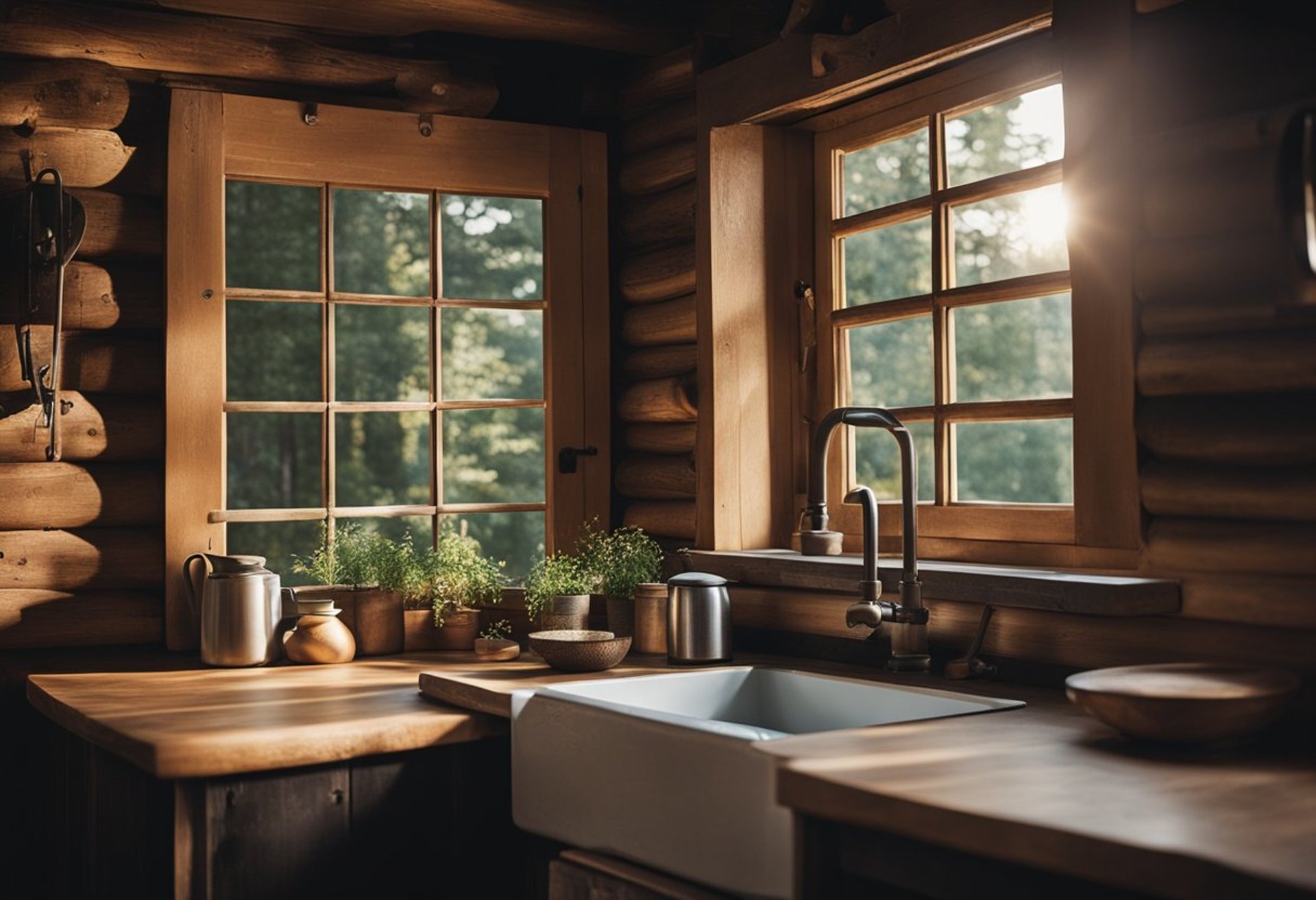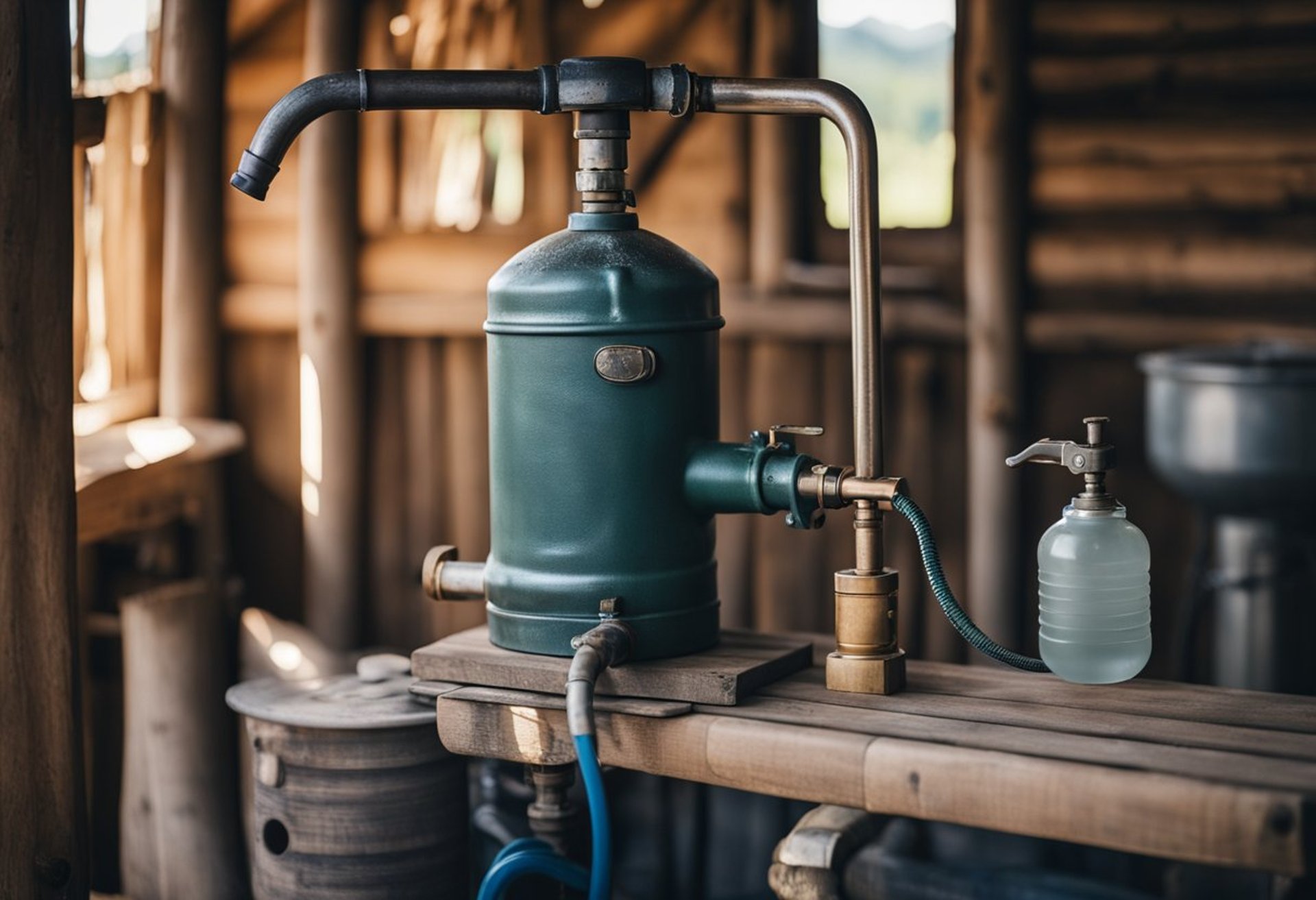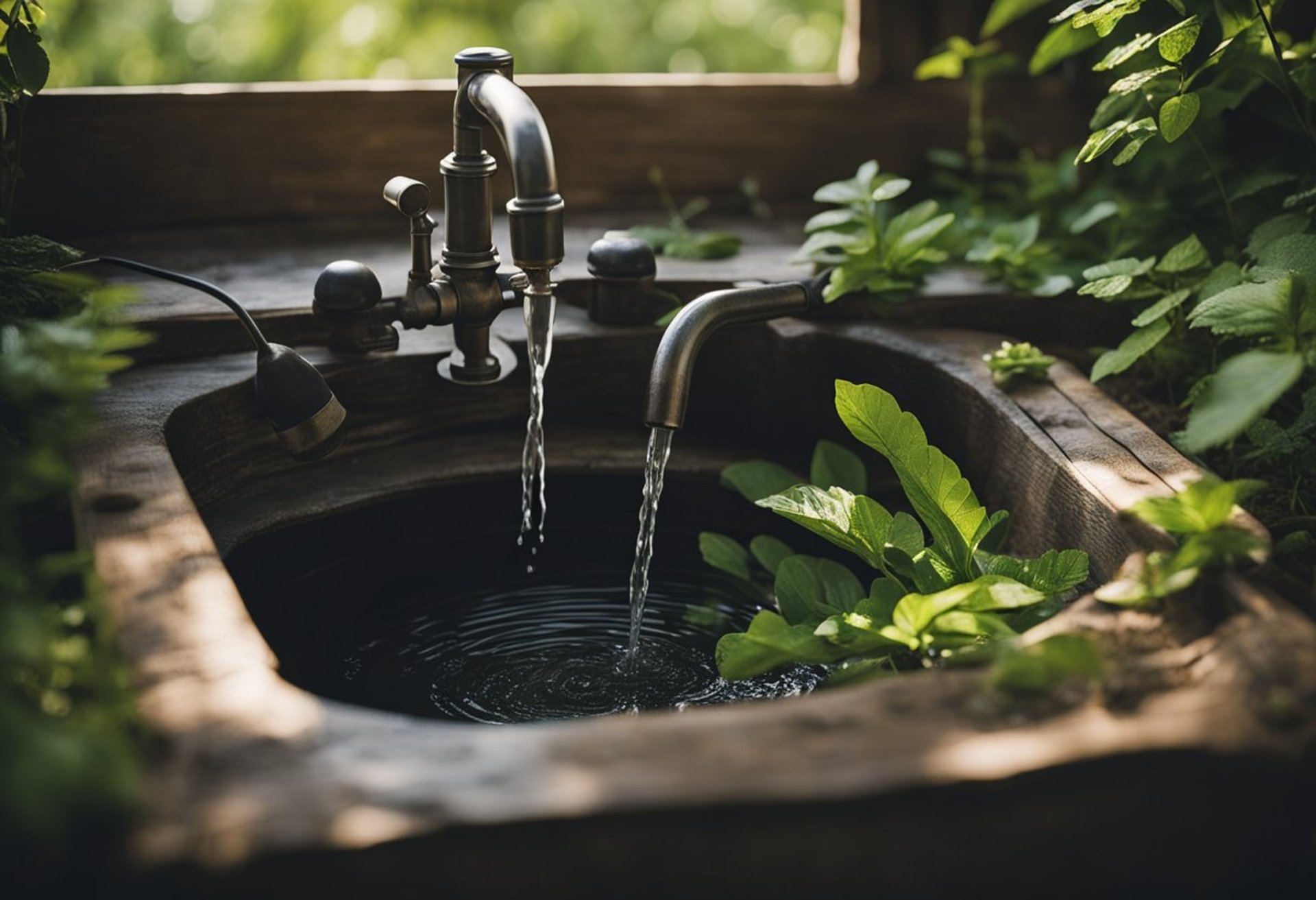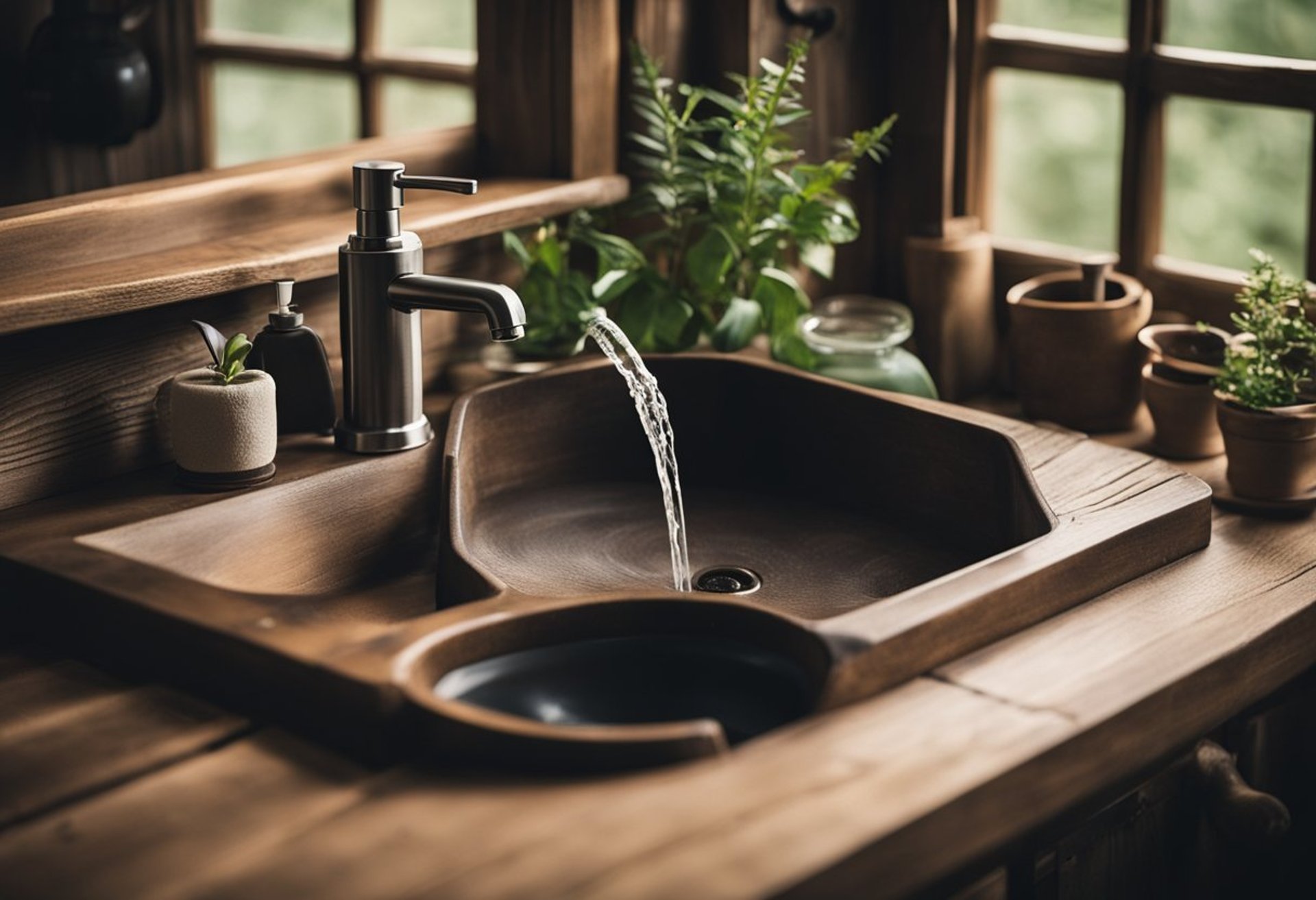Off Grid Cabin Sink: Essential Design Tips for Sustainable Living
Creating a sink for an off-grid cabin can seem daunting, but it's a crucial element for practical living in the wilderness. Choosing the right water source and management system not only ensures functionality but also aligns with sustainable practices. This blog post will explore practical solutions for setting up a cabin sink, including design considerations and maintenance tips.
Off Grid Cabin Sink: Essential Design Tips for Sustainable Living
Creating a sink for an off-grid cabin can seem daunting, but it's a crucial element for practical living in the wilderness. Choosing the right water source and management system not only ensures functionality but also aligns with sustainable practices. This blog post will explore practical solutions for setting up a cabin sink, including design considerations and maintenance tips.
The sink setup in an off-grid environment goes beyond aesthetics; it embodies a lifestyle choice of self-sufficiency. From selecting eco-friendly materials to harnessing renewable energy for pumps, every decision impacts the cabin's functionality. Readers will discover effective strategies for integrating a sink that meets both practical needs and environmental standards.
By evaluating water sources, power systems, and maintenance practices, an off-grid cabin sink can become a well-designed part of daily living that significantly enhances cabin life. The insights shared here are aimed at helping individuals create an efficient and sustainable kitchen space in their remote homes.
Key Takeaways
Effective water management is essential for an off-grid sink.
Renewable power systems can enhance sink functionality.
Eco-friendly practices reduce the environmental impact in cabin kitchens.
Planning Your Off Grid Cabin Sink
When designing an off-grid cabin sink, careful consideration of space, material, and installation is essential. The right choices can significantly impact functionality and efficiency in a compact kitchen environment.
Evaluating Space and Layout for the Sink
Assessing the available space is critical to determine sink placement. It is important to maximize functionality without overcrowding the area.
Considerations include:
Proximity to Water Source: The sink should be close to the water supply for easier use.
Counter Space: Ensure ample counter area around the sink for food preparation and washing.
Traffic Flow: Avoid obstructing pathways to maintain a smooth flow when cooking or cleaning.
Visual Aids: Sketching the layout can help visualize the arrangement and identify logistical challenges.
Choosing the Right Sink Material
Selecting an appropriate sink material impacts durability and maintenance. Common materials for off-grid applications include:
Stainless Steel: Resistant to rust and corrosion, easy to clean.
Cast Iron: Durable and can be enameled for aesthetic appeal, but heavier.
Composite and Plastic: Lightweight and resistant to stains, but may scratch easily.
Each material has distinct pros and cons. Consider factors like weight, climate, and personal preferences when making a choice.
Sink Size and Installation Considerations
The sink's size should align with the overall cabin design and intended usage. A larger sink may be beneficial for washing larger items, while a smaller one can conserve space.
Installation aspects to evaluate include:
Mounting Type: Options include drop-in, under-mount, or farmhouse styles.
Plumbing Needs: Understanding the off-grid water system will guide installation choices.
Weight: Ensure the cabinetry can support the sink's weight.
Making a well-informed decision on these factors can enhance the overall efficiency in an off-grid kitchen setup.
Water Source and Management
Effective water source and management are crucial for an off-grid cabin. Understanding the options available, along with methods for filtration and plumbing, will help ensure a reliable water supply and proper waste management.
Options for Off Grid Water Sources
For off-grid cabins, sourcing water can take several forms. Common options include:
Rainwater Harvesting: Collecting rainwater through gutters and directing it into storage tanks. This method is sustainable and can supply significant amounts of water.
Well Water: Drilling a well can provide a stable water source; however, it requires upfront investment and may need regular maintenance.
Surface Water: Using streams, rivers, or ponds is another option. Consideration of local regulations and water quality is vital.
Each method has benefits and drawbacks, making it important to assess location and personal needs.
Water Filtration and Purification
Managing water quality is essential for health and safety. Several filtration and purification methods can be effective:
Mechanical Filters: These remove sediments and larger particles, essential for clear water.
Activated Carbon Filters: Effective for improving taste and reducing contaminants, these filters are often used in conjunction with other systems.
UV Purification: Utilizing ultraviolet light can eliminate bacteria and viruses, ensuring safe drinking water.
Choosing the right combination of systems provides a comprehensive approach to water quality management.
Plumbing and Waste Water Solutions
An efficient plumbing system is essential for proper water management in an off-grid setting. Key considerations include:
Gravity-Feed Systems: If using elevated water storage, this system allows water to flow into the cabin with minimal energy use.
Grey Water Systems: Recycling water from sinks and showers for landscape irrigation can conserve resources.
Compost Toilets: These reduce water usage and create compost from waste, minimizing the environmental footprint.
Selecting suitable plumbing solutions ensures effective water usage and waste management, reinforcing the sustainability goals of an off-grid cabin.
Power and Pump Systems for Sinks
Selecting an appropriate power and pump system is crucial for off-grid cabin sinks. The options available include manual pumps and electric pumps, each with its own benefits and limitations. Additionally, solar-powered systems offer an alternative that aligns well with sustainable living practices.
Manual Pumps Versus Electric Pumps
Manual pumps are simple and effective for off-grid applications. They require no electricity, making them reliable in remote areas. Users can draw water by hand, which is straightforward and can work well in small setups.
Electric pumps, on the other hand, offer convenience. They are efficient and provide a steady water flow, which is beneficial for daily use. However, they require a power source, which may complicate the setup in completely off-grid situations.
Choosing between these systems often depends on water usage patterns and available resources. Some off-grid cabins adopt a hybrid approach, using manual pumps for emergencies and electric pumps for regular supply.
Solar-Powered Solutions for Sinks
Solar-powered pumps provide an excellent alternative for off-grid cabins. They harness energy from solar panels, making them sustainable and efficient. These pumps can be integrated into existing plumbing systems, providing convenient access to water without relying on traditional electricity sources.
Installation involves setting up solar panels, a battery storage system, and the pump itself. This ensures a reliable water supply even during cloudy days or low sunlight periods.
Solar systems can vary in capacity, and it’s crucial to select a pump that meets the specific water needs of the cabin residents. Adequate planning ensures that the solar energy system can support the demands of the sink and other water uses on the property.
Sink Maintenance and Upkeep
Proper maintenance and upkeep of an off-grid cabin sink ensure its functionality and longevity. Regular attention to both minor and major issues can prevent larger problems down the line.
Daily Maintenance Tips
To keep the sink in optimal condition, daily maintenance is essential. He or she should start by rinsing the sink after each use to remove food particles or debris. This prevents buildup and potential clogs.
Using a mild detergent and soft sponge, it is important to clean the sink's surface periodically. Abrasive cleaners can damage finishes, so avoidance is key. Regularly check for any leaks around the faucet and connections, tightening any loose fittings as required.
Additionally, it is beneficial to run hot water through the drain daily. This helps dissolve any grease that may have accumulated. Keeping a bottle of vinegar or baking soda nearby can also aid in freshening the drain periodically.
Troubleshooting Common Sink Issues
Addressing common sink problems promptly can save time and resources. If water drains slowly, it’s often due to clogs. A mixture of baking soda and vinegar poured down the drain can help clear minor blockages.
If the faucet is leaking, it may require a simple replacement of washers or O-rings. This process involves turning off the water supply, disassembling the faucet, and replacing worn parts.
For persistent odors, check the p-trap underneath the sink. It may need cleaning or replacing. Ensuring that it contains water can also help trap odors from escaping.
On occasion, if there are air bubbles when using the faucet, this might indicate air trapped in the pipes. To resolve this, run the faucet for several minutes to flush out the air.
Designing the Cabin Kitchen
Creating a functional and aesthetic kitchen in an off-grid cabin involves careful consideration of layout and design details. The sink plays a crucial role in both utility and style, and its integration into the kitchen should enhance the overall cabin experience.
Incorporating the Sink into Cabin Aesthetics
The sink should blend seamlessly with the cabin's interior design. Material choices like stainless steel or farmhouse-style porcelain can complement rustic themes, while sleek designs may suit modern aesthetics.
Key Considerations:
Placement: Position the sink near food prep areas and close to natural light sources for a bright workspace.
Countertops: Choose materials that match the sink, considering durability against weather elements.
Decor: Utilize decorative elements like wood or stone accents to frame the sink, emphasizing its place in the kitchen.
This thoughtful integration creates an inviting focal point in the off-grid cabin kitchen.
Maximizing Functionality in Kitchen Layout
A well-planned layout enhances cooking efficiency in an off-grid cabin. The triangle layout, involving the sink, stove, and refrigerator, is effective for optimizing movement.
Essential Tips:
Work Zones: Designate specific areas for washing, cooking, and storage to streamline activities.
Storage Solutions: Use vertical space effectively. Install shelves or cabinets that allow easy access to kitchen necessities.
Portable Furniture: Consider adaptable furniture options that can be rearranged based on need.
Incorporating these elements ensures the kitchen remains practical while maintaining the cabin's charm.
Eco-Friendly Practices
Implementing eco-friendly practices when setting up an off-grid cabin sink can significantly reduce environmental impact. Key considerations include the use of sustainable materials and effective water conservation methods.
Sustainable Materials for Sink Construction
Choosing sustainable materials for sink construction minimizes environmental impact. Common options include reclaimed wood, bamboo, and recycled metal.
Reclaimed Wood: Utilizes materials that would otherwise be discarded, providing unique aesthetics along with sustainability.
Bamboo: Known for its fast growth and renewability, it serves as a durable and attractive sink material.
Recycled Metal: Offers longevity and resistance to corrosion while reducing the demand for new mined materials.
These materials often require less energy to produce than conventional options. By selecting responsibly sourced products, she or he can create a cabin sink that aligns with eco-friendly principles.
Conserving Water in an Off Grid Cabin
Water conservation is critical in an off-grid setup. Implementing systems that optimize water use can help in both economic and environmental savings.
Low-Flow Faucets: Installing low-flow fixtures can significantly reduce water consumption.
Greywater Systems: Creating a system to recycle water from sinks for irrigation helps conserve this valuable resource.
Rainwater Harvesting: Collecting and storing rainwater can provide an alternative water source, reducing dependence on well water or other supplies.
By integrating these practices, they contribute to a more sustainable lifestyle while meeting the basic needs of their cabin environment.

